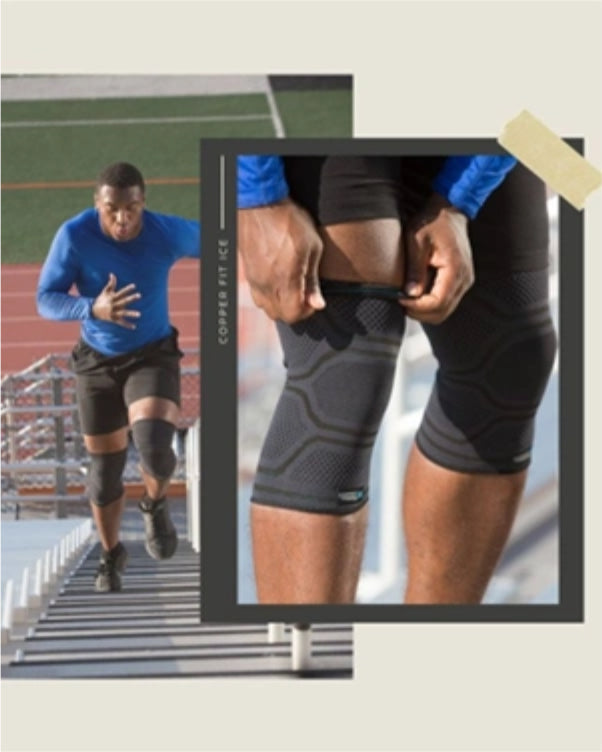Continue Shopping
Your cart is empty
Free shipping on orders over $65
Free socks with any purchase
Free shipping on orders over $65
Free socks with any purchase

G | R | 0 Accounts
Key Takeaways
Carpal tunnel syndrome is a relatively common wrist issue that can disrupt your daily routine. From gripping a coffee mug to typing at your desk or lifting weights, tasks that once felt automatic may suddenly feel uncomfortable, or even impossible. When your hands don’t work the way you need them to, it’s physically limiting and mentally frustrating.
For some, surgery becomes part of the solution. And while the idea of undergoing a procedure on your hand might sound intimidating, understanding the recovery process can make it much easier to navigate.
This guide breaks down everything you need to know, from how surgery works to how long it may take to get back to feeling strong and confident in your movements. Whether you’ve already scheduled your procedure or you’re still exploring your options, we’re here to help you stay informed, proactive, and in control of your recovery.
Carpal tunnel syndrome happens when the median nerve running through your wrist gets compressed inside the carpal tunnel passageway. That pressure can cause a range of symptoms like tingling, numbness, weakness, or soreness in your hand and fingers. It’s often caused by repetitive motion, poor wrist alignment, or prolonged pressure in the wrist area.
Not always. In fact, many people find relief with non-surgical treatments, especially in the early stages.
Common first steps include:
However, when symptoms don’t improve or start to interfere with basic tasks like buttoning a shirt or gripping objects, surgery may become necessary. People often consider surgery when they experience persistent numbness, weakness, or decreased hand coordination, even after trying conservative treatments.
There are two common types of carpal tunnel surgery:
Both methods relieve pressure on the median nerve and are typically performed as outpatient procedures with local anesthesia. For most people, the results are positive, with reduced discomfort and improved function over time.
Right after the procedure, your hand and wrist will be wrapped in a bandage or splint to protect the surgical site. It’s normal to feel some soreness, tightness, or numbness in the first few days. You might also notice limited grip strength or stiffness in your fingers.
This is the body’s natural response to the healing process, and the first few days are all about rest. Elevating your hand above heart level and using cold packs (if recommended by your surgeon) can help reduce swelling. At the same time, gentle finger movements may be encouraged to keep circulation flowing and avoid stiffness.
You may need help with tasks that involve gripping or twisting, like opening jars or lifting heavier items. Be patient with yourself. This is a temporary phase, and the goal is to give your body the time it needs to repair and recover properly.
Healing is a process that works best when you support your body consistently. Here’s what that looks like after carpal tunnel surgery:
It’s helpful to know that some post-surgery discomfort is completely normal. Common challenges include:
These experiences are valid and common. Recovery isn’t always a straight line, and it’s okay to feel frustrated at times.
Focus on progress, not perfection, and remember that healing takes time, especially when nerves are involved. If you’re able to, lean on a support system or speak with your provider about concerns. Active rest, good posture, and consistency will move you forward.
While mild soreness or swelling is expected, certain signs may indicate a problem that needs medical attention.
Reach out to your doctor if you notice:
Your surgical team wants you to succeed, so never hesitate to call if something feels off.
Once you’ve recovered, there are simple ways to protect your wrists long-term and reduce your risk of another flare-up:
These everyday habits can make a big difference, especially when combined with consistent support and care.
Most people regain basic hand function within six to 12 weeks. Full grip strength and dexterity may continue to improve for up to six months.
Some soreness, numbness, or tingling is common in the early days after surgery. Most discomfort fades within a few weeks, and your care team will guide you through managing it.
Eventually, yes, but wait for medical clearance. You’ll likely start with light activity and gradually return to more intense workouts over several weeks to months.
At Copper Fit, we understand what it’s like when discomfort gets in the way of doing what you love. When you’re dealing with soreness or limited function in your hands, even basic tasks can feel like a challenge. Recovery from carpal tunnel surgery can feel slow at times, but you’re not in it alone.
We’re proud to offer supportive recovery gear that’s built to help support what your body is already doing—healing. Our compression sleeves and wrist supports are designed to maintain healthy circulation, soothe discomfort, and support your wrist without limiting movement.
They’re part of a bigger picture: helping you move better, feel better, and stay active, every step of the way. Whether you’re just starting your recovery or finally getting back to your routine, we’ve got your back.
Sources:
Carpal tunnel syndrome - Symptoms and causes | Mayo Clinic
Is Your Home Office Making Your Carpal Tunnel Syndrome Worse? | UMMS Health
7 hand exercises for carpal tunnel syndrome with pictures | Medical News Today




